3x3 ROUX TUTORIAL
There are 3 basic cases for this last step: 2 dots, 4 dots, and 3-edge cycles.
2 Dots (Bars)
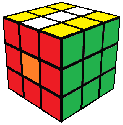
(U2 M2 U2)
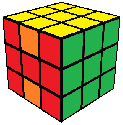
(M2 U2 M2 U2)
These can be solved very quickly.
4 Dots
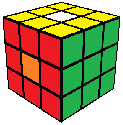
(E2 M' E2 M)
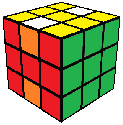
(E2 M' E2 M')
This is the awkward case. One could solve it conventionally with M and U turns, but using the E slice is faster with practice.
3-Edge Cycles
3-edge cycles are a common case requiring only 4 or 5 turns to solve, but recognizing their best solution takes practice.
First, find the "unique edge" whose stickers do not align with its neighboring centers in the M slice. Make sure that the unique edge is in the top layer, using M2 if necessary.
Next, look at the FU and BU stickers. (Actually, to save time, you'll want to track the BU in advance so you already know what it is.) They will be either the same color (e.g. red) or opposite colors (e.g. red and orange).
- Same color: do (MU2 MU2) or (M'U2 M'U2), whichever keeps the unique edge on top. A final M2 may be required to solve the cube.
- Opposite color: do (U2 M U2) or (U2 M' U2), whichever keeps the unique edge on top. A final M or M' turn solves the cube.
This can be a challenging step, so here are some cases to help. The solution to 3-edge cycles depends on the color (orange or red) of the BU edge sticker, which I've indicated with O or R.
FU/BU SameFU/BU Different
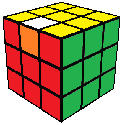
O: M'U2M'U2M2
R: U2MU2M'
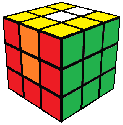
O: M'U2MU2M2
R: M2U2MU2M'
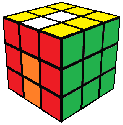
O: U2M'U2M'
R: MU2M'U2M2
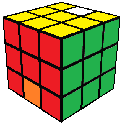
O: M2U2M'U2M'
R: MU2MU2M2
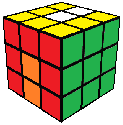
O: U2MU2M
R: M'U2M'U2
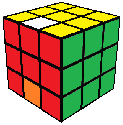
O: M2U2MU2M
R: M'U2MU2
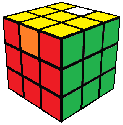
O: MU2M'U2
R: U2M'U2M
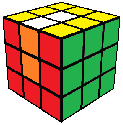
O: MU2MU2
R: M2U2M'U2M
Let's bring it all together with some example solves.
 Back
Back